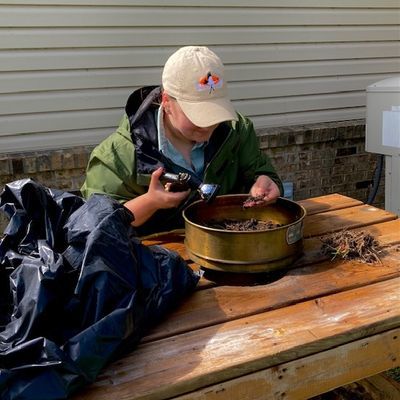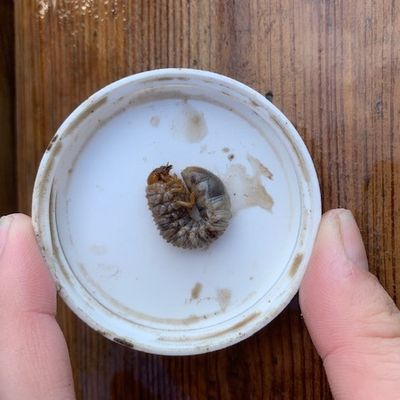Welcome back!
Now we all know there is life everywhere, even under our feet, but have you ever wondered what they are? Or what they eat or do all day? Well this week I was able to answer those questions and more while I worked closely with the Crane Trust’s PhD student from Oklahoma State University, Abraham Kanz, and his technician, Sam Heilman. More specifically, I worked with them to study the macroinvertebrates found within the wet meadows throughout the Central Platte River Valley.
Before we go any further, let’s first figure out what macroinvertebrates are. After an informative talk, Abraham shared that macroinvertebrates are organisms without a backbone, but are large enough to be seen without a microscope. They can live underwater in areas, such as streams or rivers, or they can live underground. I learned that there are a lot of macroinvertebrates that live in places such as wet meadows, which are important habitat for migrating, feeding, and nesting avian species, including our Sandhill and Whooping Cranes. I had no idea macroinvertebrates were so important in the crane’s diet. Abraham explained how even though macroinvertebrates only make up about 5% of a Whooping Cranes diet, they will spend over 50% of their time searching for them. The reason cranes will dedicate so much time searching for macroinvertebrates is because they provide protein and other nutrients that are otherwise lacking in corn and other plants in their diet.
Knowing all of this new information, I was able to see the full picture of why studying macroinvertebrates and conserving wet meadows was so important to the Crane Trust’s mission! By restoring and conserving wet meadows, they are able to help facilitate a healthier ecosystem for macroinvertebrates and thus, create more foraging opportunities for the Sandhill and Whooping Cranes! But now the question arises, how do you study macroinvertebrates?
I was able to see this process first-hand as I worked alongside Abraham and Sam in the field. Several times a week, the three of us have gone into the field to a wet meadow site. Once there, we each began to take soil samples at different points along a transect within the site. The soil samples were then taken back to the office where the three of us began sifting through them (yes, by hand!) for any macroinvertebrates we see (Pictures top left and top right)! The invertebrates were collected for identification to species at a later date. For example, I was able to collect this June bug larvae (Bottom picture). Abraham explained how the goal for his project is to have a better understanding of how these macroinvertebrate communities relate to wet meadow conditions, which the Crane Trust will use to better manage their wet meadows in order to create the best habitat possible!



Although I came into this position with a bachelors and master’s degree in Wildlife Conservation, I have never had the opportunity to work with any species as small as macroinvertebrates. Therefore, getting to work with Abraham and the Trust on this project has given me a new appreciation for not only life underground, but has opened my eyes to the bigger picture. Even something as small as macroinvertebrates are important to the plants and wildlife I have studied my entire life. I hope this blog post opened your eyes too!
To learn more about wet meadows, check out this link: https://linktr.ee/cranetrustmacro
Until next time!
Cheers,
Amanda Medaries

